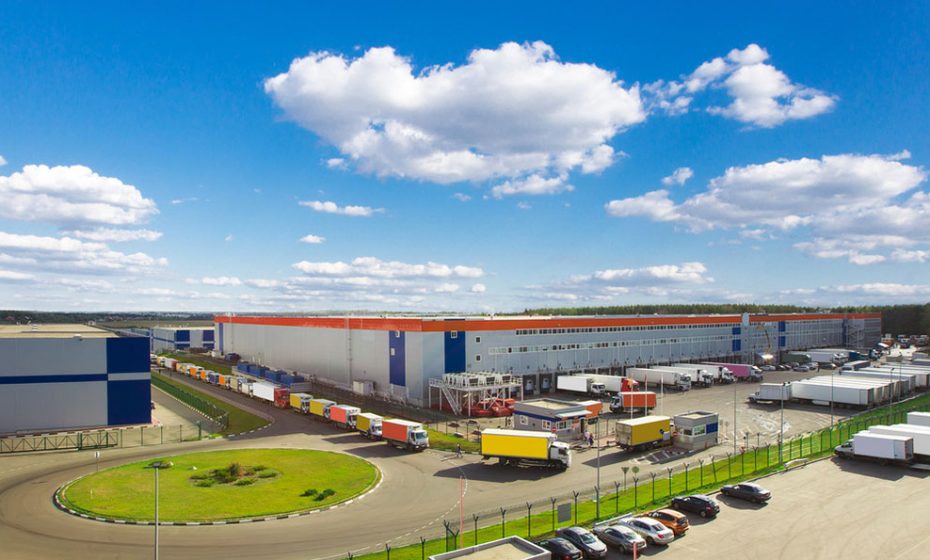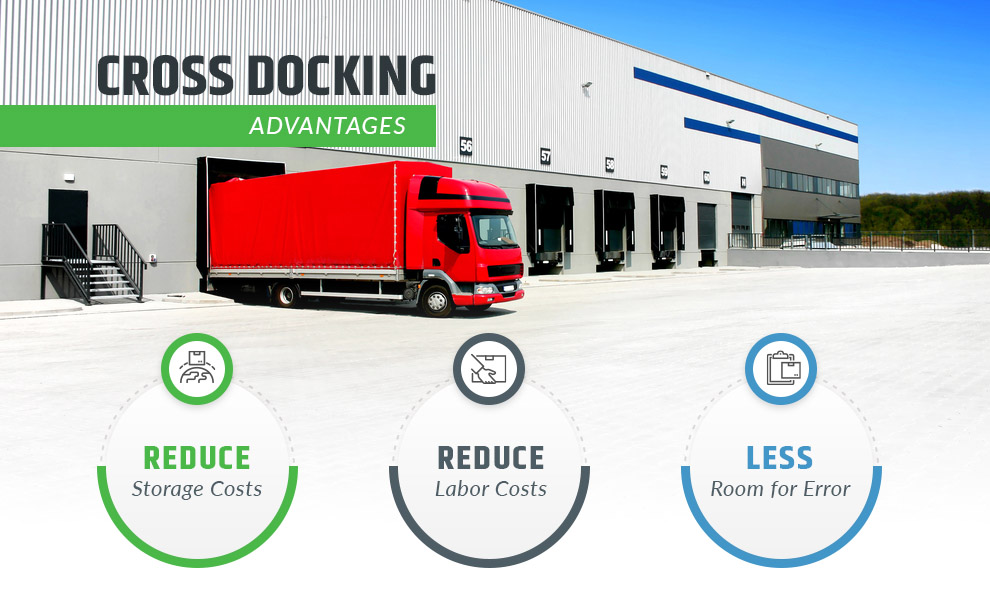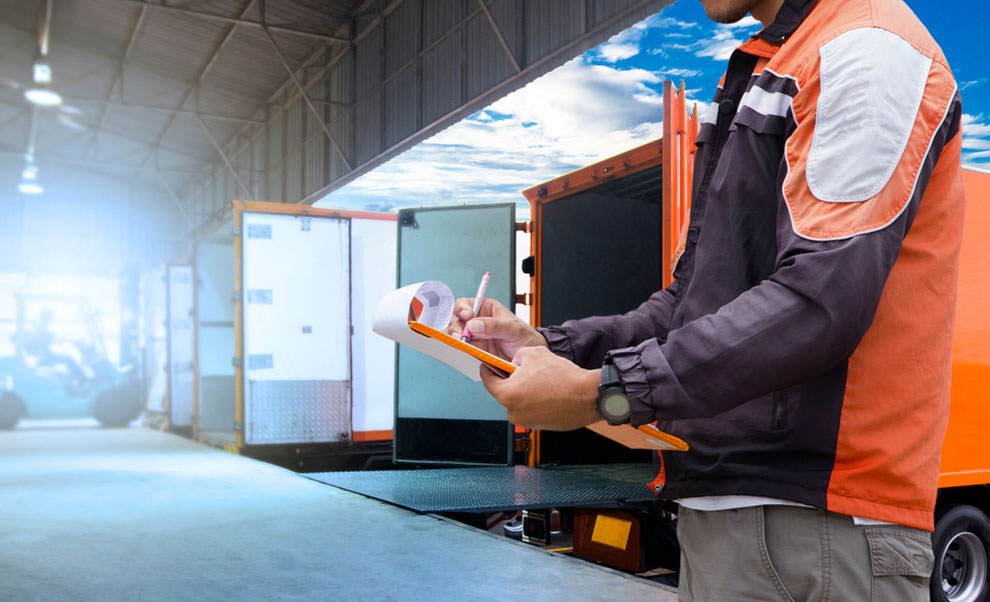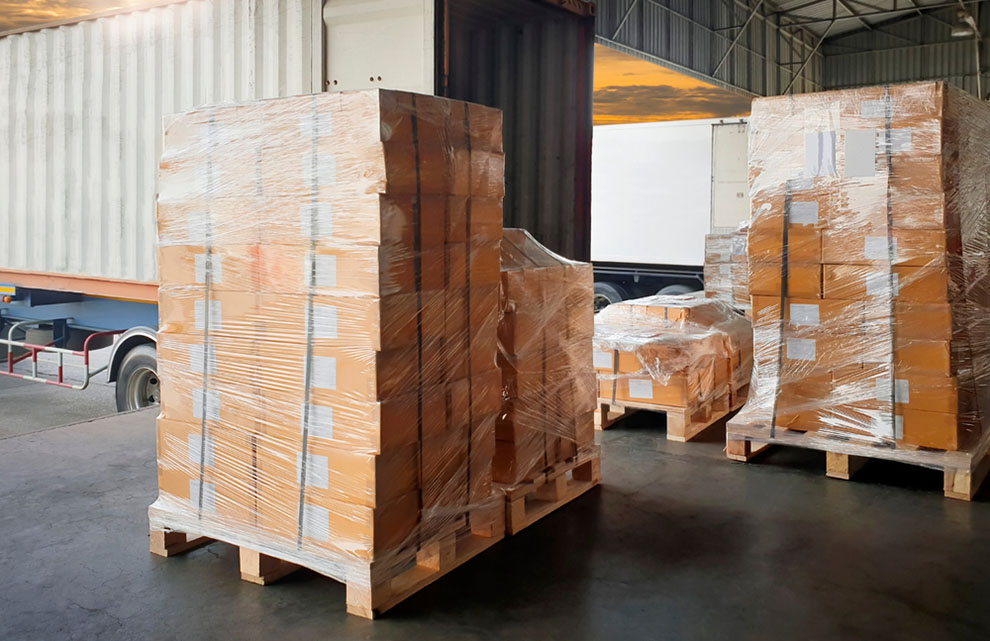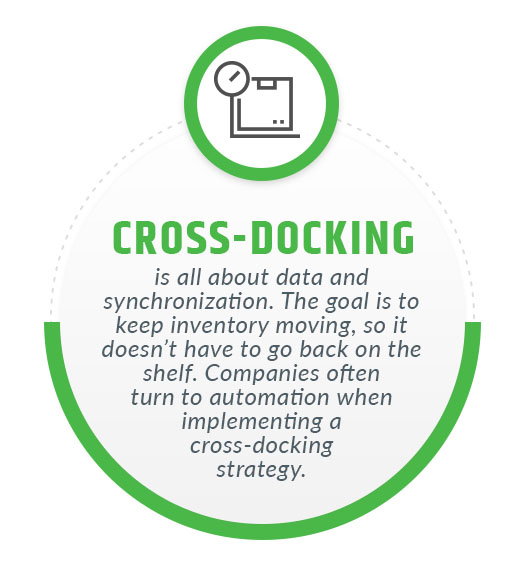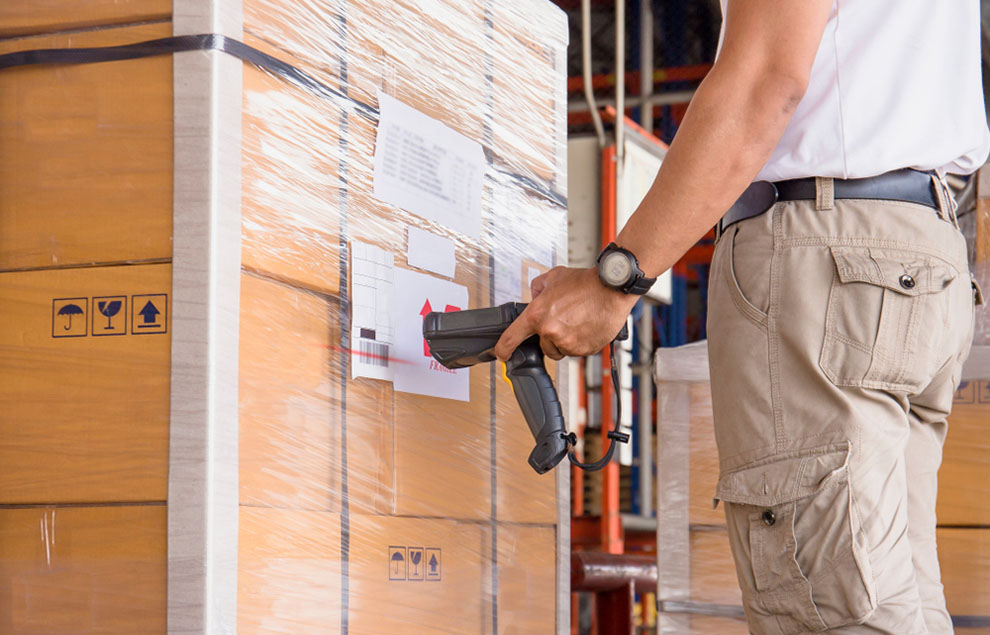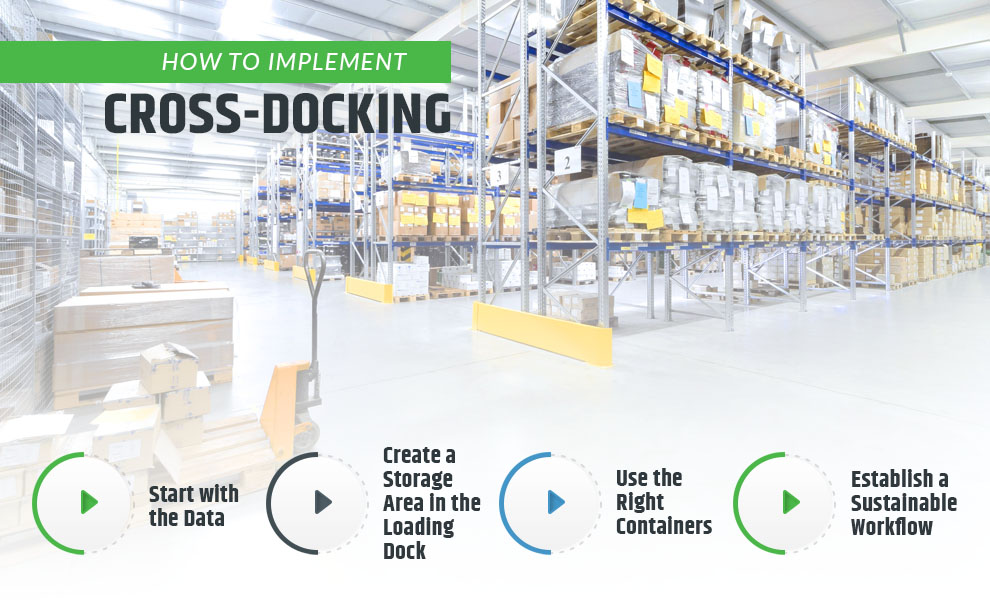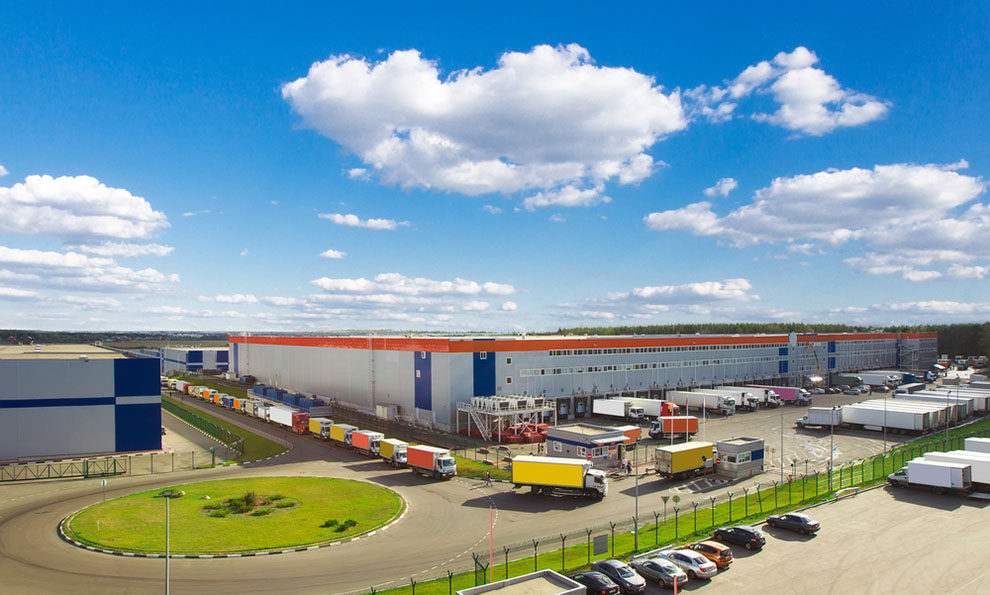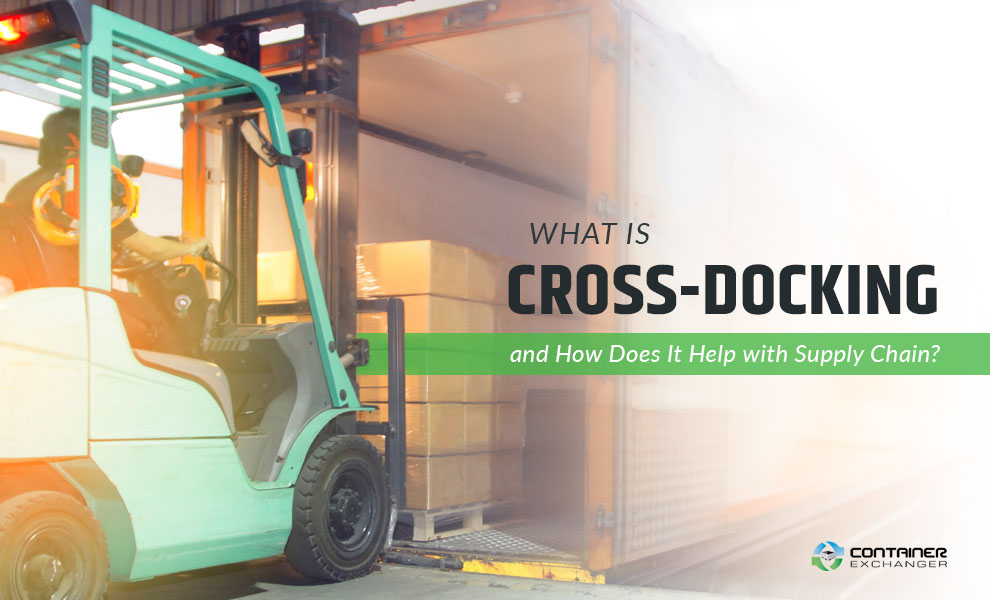
Today’s products and goods are moving faster than ever before, thanks to what’s known as cross-docking. Technology and automation further streamline the process by automatically rerouting packages based on demand. The goal is to get your products to their destination as quickly and cheaply as possible, so how can cross-docking help?
As products move throughout the supply chain, they typically pass through a series of location-based distribution centers before reaching their destination. Each distribution center or warehouse can use cross-docking to reduce storage and picking costs. Incoming goods are immediately loaded onto an outgoing vehicle instead of going back on the shelf. This reduces transit and storage time, so products reach their destination ASAP.
Advantages and Benefits
Collapsible Bulk Containers Help You Save Space
There are many advantages to cross-docking. Warehouse managers can focus their efforts on unloading and loading cargo without having to worry about putting these packages or goods back on the shelf.
Reduce Storage Costs
This is crucial when it comes to reducing storage costs. Statistics show the average asking price for rent per square foot of U.S. warehousing has risen by 4.8 percent to $7.86 over 12 months. Some inventory may remain onsite for months at a time, but cross-docking limits the amount of incoming inventory so managers don’t have to make additional room on the shelf. Cross-docking limits the amount of time these products stay onsite. Managers can retain more clients without increasing their overhead expenses or investing in additional storage space.
Reduce Labor Costs
Warehouse managers can also use this method to reduce their labor costs. Sorting and shelving incoming products can be time-consuming and expensive. Employees won’t have to waste time moving these packages to the main storage area. They can focus on loading and unloading incoming and outgoing packages quickly. This also gives them more time to scan containers and repackage individual goods when necessary. Some facilities may be able to automate this process, further reducing the need for human labor.
Less Room for Error
Without cross-docking, managers and their teams would have to move incoming cargo to the main storage area, only to retrieve these same items several days or weeks later. However, this can lead to unforeseen errors that can slow down the order fulfillment process. Employees may have trouble finding the item in question on the shelf, especially if these packages or goods all look alike. If they bring the wrong item to the loading dock, they will either send the wrong package out by accident or waste time having to go back to retrieve the correct item. Managers will also have to spend time putting misplaced items back where they belong at the end of the day to keep the facility organized.
With cross-docking, these items stay in the loading dock or temporary storage area until they go back out for delivery. This minimizes the risk for human errors. Employees can keep their eyes on the goods in question so they don’t get lost in the shuffle.
This model shows how cross-docking can be used to lower costs and increase efficiency throughout the supply chain.
Pre-Distribution vs. Post-Distribution Cross-Docking
There are two different types of cross-docking: pre-distribution and post-distribution. Each is suited to a particular type of business model.
Industrial Metal Storage Bins Can Hold Large Quantities
Pre-distribution cross-docking means the packages are goods that are unloaded with a particular destination, or customer, in mind. The warehouse or distribution center should know where each package is headed. The supplier or retailer may include specific distribution instructions as well. Typically, goods will arrive in bulk only to be broken down in smaller shipments based on their destination. Employees may spend their time breaking down bulk containers and packaging goods into smaller boxes, suitable for at-home delivery.
Post-distribution cross-docking is when the goods are unloaded without a particular destination or customer in mind. The goods are then sent out to other distribution centers, retail outlets or storage areas based on local demand and sales forecasts. Some goods may linger in the loading dock until the facility receives specific delivery information based on how much the retailer expects to sell. This is a popular choice when shipping popular goods where demand can change on a dime. Retailers often prefer this model for the added flexibility. They can make more informed decisions regarding their inventory while keeping goods close to the final destination.
Cross-Docking, Automation and Artificial Intelligence
Cross-docking is all about data and synchronization. The goal is to keep inventory moving, so it doesn’t have to go back on the shelf, but that’s often easier said than done.
Companies often turn to automation, Artificial Intelligence (AI) and what’s known as the Internet of Things (IoT) when implementing a cross-docking strategy. Ideally, the incoming vehicle will arrive just a short while before the delivery vehicle, so packages can be moved onto the outgoing vehicle as quickly as possible. This requires impeccable timing and precision. If either vehicle misses the mark, the packages may be delayed. Without additional storage space for these packages, the warehouse may have to keep them in the loading dock, making it difficult for employees to navigate the space.
That’s why it’s important for facilities to track incoming and outgoing vehicles, packages and goods as they move through the supply chain in real time. Packages and containers should be scanned manually or automatically as they move from one stage of the supply chain to the next. Managers should keep their eyes on this information to make sure these goods can be handed off without delay. They also need to know exactly how long it will take their workers to unload, scan, repackage and load these packages onto the delivery vehicle in order for the truck to stay on schedule.
Deliveries and drop-offs will need to be staggered throughout the day to make sure there are enough hands on deck to move these packages along quickly. Automatic scanners, packaging systems and conveyor belts can be used to automate the process, so the manager can time the hand-off down to the exact second.
Technology and AI help facilitate most post-distribution cross-docking operations. Retailers, warehouses and distribution centers need to anticipate future demand to make sure they are holding on to just the right amount of inventory. All parties will need to refer to these sales estimates based on recent trends to stay on target. Without data analytics, the warehouse or store might run out of inventory when they need it most, drawing ire from customers. If they order too much, most of it will have it sit on the shelf until demand picks up again. This leads to high storage and labor costs.
Cross-docking often means operating without a lot of wiggle room. If one cog breaks down, the entire machine will quickly go with it. That’s why automation and technology are often crucial to success.
How to Implement Cross-Docking at Your Facility
Now that we’ve covered the basics of cross-docking, it’s time to implement a successful strategy at your facility. Regardless of the size or scope of your business, there are several ways to make cross-docking work for you.
Start with the Data
Your approach to cross-docking will only be as good as the data you use to power it. Again, your success all comes down to precision and accurate data analysis. If you don’t already, begin scanning your products as they make their way through the supply chain. You should be able to track incoming and outgoing vehicles and goods in real-time.
Decide whether you want to invest in pre-distribution cross-docking, post-distribution cross-docking or some hybrid of the two based on your existing business model. If you choose pre-distribution, you will have to time the arrival and departure of your goods down to the exact minute. Your data should make room for unforeseen errors and travel delays that may affect the supply chain. Create a contingency plan to minimize any related fallout these problems may cause. You may want to partner with more than one logistics provider or transportation company so you have multiple options for deliveries and drop-offs.
For post-distribution, use data analytics and sales forecasts to anticipate your cross-docking needs. Work with your business partners to better understand the latest sales trends. Based on the nature of your business, compare previous sales reports to figure out how much inventory you need to keep on hand and when. Ideally, you will order additional supplies and inventory just in time for them to go out for delivery. You may keep these products close by until they are ready to go out for delivery. If you order too much inventory too soon, your cross-docking plan will start to look more like traditional warehousing as extra packages start to pile up.
Create a Temporary Storage Area in the Loading Dock
Once you have the data in place, it’s time to create the ideal cross-docking station. This may be a sliver of your total warehouse and storage space, but it may end up being the busiest part of your facility. It should be located next to, if not in, the loading dock so your team can keep incoming packages close to the drop-off point. Consider creating a designated cross-docking station. That way, your employees don’t accidentally put these items back on the shelf.
The area should be well-lit with clear signs and safety instructions for loading, unloading, scanning and repackaging goods. Give your team plenty of room to move around so they don’t have to worry about bumping into each other or getting injured on the job. Use stack racks and temporary storage equipment to quickly sort outgoing or incoming packages based on their destination. Do your best to keep this area clean and free of debris for a safer working environment.
Use the Right Containers and Equipment
Cross-docking is all about speed and efficiency, so make sure your team is working smarter, not harder. For the unloading process, use collapsible bulk containers to keep things moving. They are designed to safely hold large volumes of merchandise. Your team can use a forklift to quickly unload thousands of pounds in just a matter of minutes. Once you have emptied the container, fold it up and set it aside to free up additional space in the loading dock. You can then repackage individual products before loading them onto the delivery truck.
Your employees will also need access to supplies and materials when breaking down packages and building them back up again. Use industrial metal storage bins to keep the area neat and organized. You can use these containers to store valuable tools and supplies so they don’t go missing. If a package is damaged or needs to go back on the shelf, set it aside in a metal bin so it doesn’t go out for delivery by accident.
Establish a Sustainable Workflow
When it comes to cross-docking, time every aspect of your operations down to the minute. Your employees should follow a specific set of instructions when loading, unloading, scanning and repackaging goods. This will help streamline the process so goods go out on schedule. If the process takes longer than expected, there’s a good chance they won’t reach the destination on time.
Continue analyzing your operations as time goes on. As with most things in life, cross-docking takes practice. If your workers are used to picking and sorting goods the old-fashioned way, they will need some time to adjust. Try adjusting certain elements to improve your operations along the way. For example, learn about the differences between a skid vs. a pallet to see which is better for your products. Try rearranging the space to help your employees do their jobs in less time.
There’s no one-size-fits-all solution when it comes to cross-docking, so be flexible with your approach. Every warehouse is different. Implementing a successful approach may take years, so be wary of biting off more than you can chew. Use this guide to learn more about cross-docking and its implications in location-distribution services.
Image Credits
Siwakorn1933/Shutterstock.com
Don Pablo/Shutterstock.com
davooda/Shutterstock.com
Petinov Sergey Mihilovich/Shutterstock.com
https://www.webwiki.com/containerexchanger.com
https://www.owler.com/company/containerexchanger
https://www.entrepreneur.com/growing-a-business/10-ways-to-trim-shipping-costs/224619
